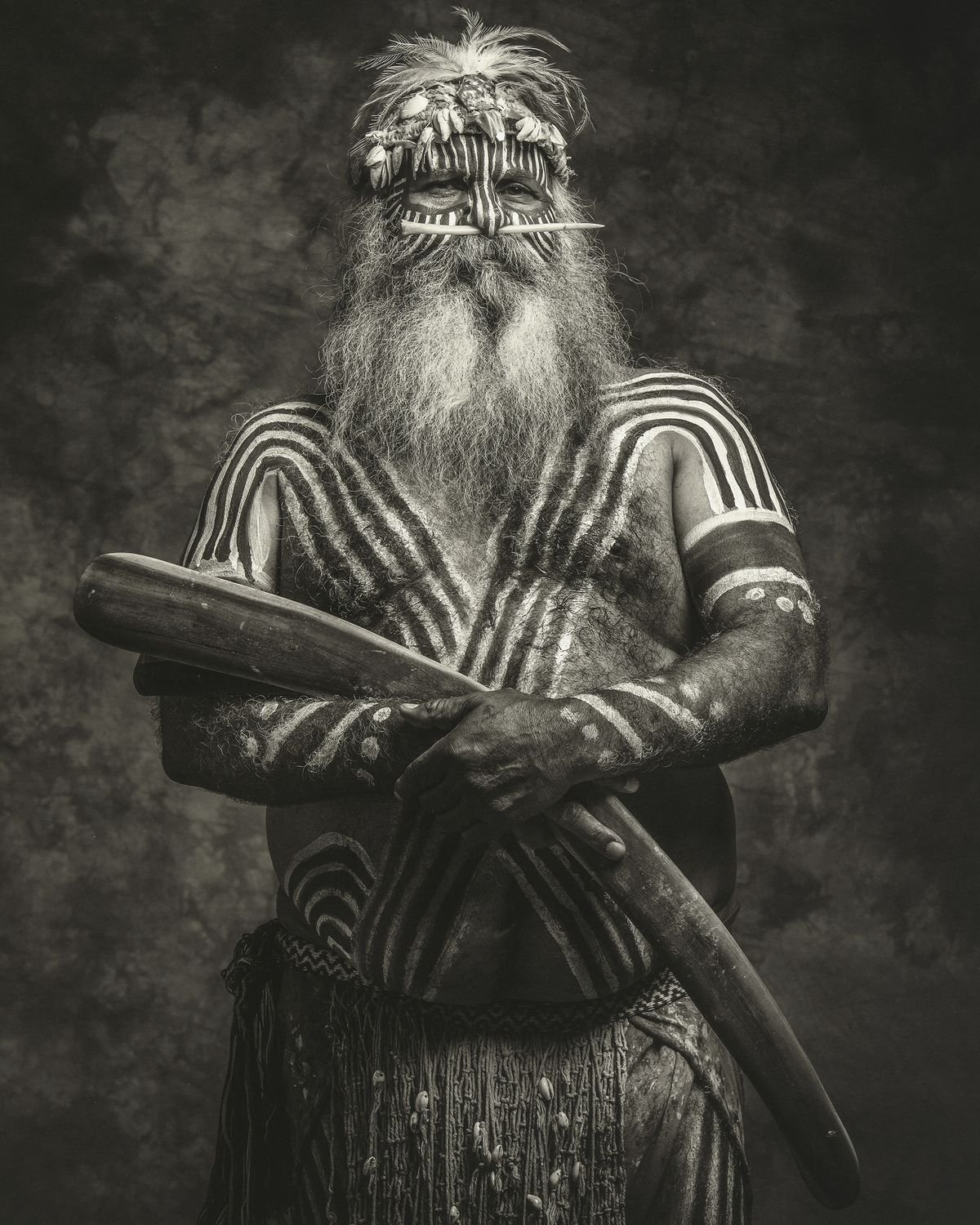
(Shen, 2014)
Body Language Learning Resource
The First Nations Body Language learning resource is an insightful and important resource provided by the National Gallery of Australia that aims to reveal the “central role language plays in expressing cultural identity in Aboriginal and Torres Strait Islander art” (NGA, 2023). Through developing their own artwork, students will engage in discussion and inquiry while learning to interpret and investigate the meaning of language In Indigenous culture (NGA, 2023).
This resource became of interest to me because I was intrigued by the concept of body language influencing the representation of indigenous art. I also looked at this resource as an opportunity for myself and students to discover and learn more about the expression of art through Indigenous and Torres Strait Islander cultures. Within this resource, I’ve chosen to focus on a Making task called Aubrey ‘Tigan’s Riji (Body Paint)’ that involves students creating marks on paper that imitates their ideas on the movement of water. The nature of this task offers a lot of freedom to be creative which I think students will appreciate, and I believe that learning through the histories of Indigenous art is one of the most exciting ways to engage students in the diverse and rich values of Indigenous culture.
(Wallace, 1997)
Aligning with the Australian Curriculum’s year 7 and 8 band, this resource actively seeks to meet the requirements of content descriptor (ACAVAM118), encouraging students to “experiment with visual arts conventions and techniques, including exploration of techniques used by Aboriginal and Torres Strait Islander artists, to represent a theme, concept or idea in their artwork” (ACARA, 2010). This resource provides a space for students to experiment with materials and making processes used by Aboriginal and Torres Strait Islander artists, consider indigenous perspectives and the representations linked to Indigenous art styles, and investigate how Indigenous artists apply techniques to convey ideas in their art making (ACARA, 2010). All activities including ‘Aubrey Tigan’s Riji (Body Paint)’ have a strong link to the Aboriginal and Torres Strait Islander cultures cross-curricula priority and have a clear emphasis in developing intercultural understanding.
For educators, this resource could be matched well with explicit teaching, while providing worked examples could further support students in understanding the task and how to perform some of the Indigenous art styles/techniques. The making and responding tasks outlined would be most suited to just one lesson, however they are interchangeable and could work together if you wanted to create more focus over a few lessons.
This resource is designed in a way that makes it easy to navigate and find each section of content. The interface is extremely functional, and on the introduction page you can find a list of relevant resources and short activities that you can engage with before diving into the more in-depth lesson content. What I like most is that ‘making’ and ‘responding’ tasks each have their own separate page where you can visit and pursue lesson plans involving those Australian Curriculum strands. This way, you can easily differentiate the two and possibly spend one lesson doing a making task, and then another a responding task. Provided within ‘Aubrey Tigan’s Riji (Body Paint)’ task is an outline of the founding artist and some information about the Indigenous art style and its cultural significance.
References:
(NGA, 2023)
Australian Curriculum, Assessment and Reporting Authority (ACARA). (2010). Visual Arts F-10 Curriculum. https://www.australiancurriculum.edu.au/f-10-curriculum/the-arts/visual-arts/
National Gallery of Australia (NGA). (2023). Body Language Learning Resource. https://nga.gov.au/learn/learning-resources/body-language-learning-web-resource/
Shen, D. (2014). Ngarrindjeri people, Ventral aspect of a male #2. [Image]. National Gallery of Australia. https://nga.gov.au/learn/learning-resources/body-language-learning-web-resource/
Tigan, A. (2010). Body Paint. [Carved Ornament]. National Gallery of Australia. https://nga.gov.au/learn/learning-resources/body-language-learning-web-resource/making/
Wallace, D. (1997). Stockman and Horse. [Wire Scupture]. National Gallery of Australia. https://nga.gov.au/learn/learning-resources/body-language-learning-web-resource/making/
(Tigan, 2010)




